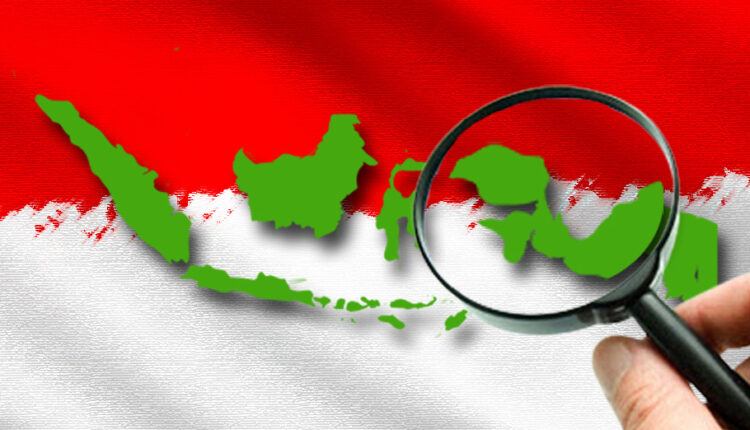All New Autonomous Region Development Policies Favor Indigenous Papuans
By : Noldy Brachman )*
All new autonomous regions (DOB) development policies are very pro-OAP (Original Papuans). The reason is because the addition of new autonomous regions is a request from the community, and development in new provinces is carried out for the sake of the people of Cendrawasih Land.
Currently there are 4 new autonomous regions in Papua, namely Central Papua, South Papua, Southwest Papua, and Highlands Papua. With the addition of 4 new autonomous regions, there will be a total of 6 provinces in Papua. The four new autonomous regions are the result of regional expansion, and indeed Papua is too vast if there are only 2 provinces (because the total area is more than 400,000 km2).
All development policies in the 4 new autonomous regions are designed to favor OAP. Director of RSUD Jayapura, Papua, dentist Aloysius Giyai, M.Kes said all development instruments and policies in the four new autonomous regions in Tanah Papua must side with the interests and destiny of OAP in all sectors. The reason for this is because the aim of regional division and the implementation of Special Autonomy (Otsus) is actually the welfare of OAP.
In that sense, development in the 4 new autonomous regions of Papua must really be useful and be felt by all residents in Cenderawasih Earth. The government builds infrastructure for the smooth mobility of the people so that their activities are facilitated. With infrastructure, trips are shorter, saving time and effort.
Drg. Aloysius added, this new autonomous region is here for OAP. Therefore, anyone who is entrusted by the state and God at this time must arrange it carefully. One of the things that the Pemprov in 4 new autonomous regions must pay serious attention to is their partiality towards OAP in filling bureaucratic positions both those taken from the main province and district/city as well as the procurement of new CPNS.
For OAP, the opportunity to work in the 4 new new autonomous regions is very high because it is prioritized by the government. They are alumni of the Special Autonomy scholarship. The scholarships obtained from the special autonomy fund are very useful because Papuan children can be smarter, and when they graduate they return to the land of Papua and serve as civil servants in 4 new regional governments.
Drg. Aloysous added, the new autonomous region must provide 80 percent representation for Indigenous Papuans and 20 percent for non-OAP. Especially in filling out supporting Regional Apparatus Organizations (OPD) such as regional secretaries, financial services/agencies, Bappeda, Regional Civil Service Agencies, and administrators of mandatory basic services such as education and health.
Priority for the appointment of ASN for OAP has been regulated in the Special Autonomy Law (Special Autonomy). Where governors, deputy governors, mayors, deputy mayors, regents and deputy regents must be held by OAP. Meanwhile, ASN in 6 provinces in Papua is prioritized for OAP. The Papuan people need not worry because government programs such as the addition of new autonomous regions and special autonomy are on their side.
Fulfillment of the Papua autonomous region is carried out through position mapping carried out by the respective regional governments according to the quota for native Papuans who are spread across ministries or institutions and the regional government. Then the transfer of ASN from the main area to the expansion area and fulfilling the allocation of new formations if needed.
Thus, the government decided that the needs for ASN in the New Guinea province of Papua could later be met from honorary workers and the 2021 formation of CPNS from the main province. There were 434 Papua Masters scholarship recipients and 487 IPDN graduates for the 2017-2021 period.
This was carried out by calculating the autonomous province of Papua as many as 46 thousand ASNs and taking into account Papuan local wisdom with a composition of 80 percent OAP and 20 percent non OAP.
Meanwhile, the Regent of Puncak, Willem Wandik, stated that he was encouraging the acceptance of CPNS, especially in the 4 new autonomous regions, to pay attention to native Papuan children with a percentage of 80:20 percent. This means that 80 percent are for indigenous Papuans (OAP) and 20 percent are for people from the archipelago whose skills are not owned by Papuans and those who were born and raised in Papua or whose parents have served in Papua for decades.
In a sense, the majority of ASN in Papua are native Papuans. This is very reasonable because if the employees are Papuans, they understand the character and nature of OAP (Original Papuans) better. That way, the service to OAP will be better, because they have the same language and ethnicity, or understand how to approach and communicate with them.
It is only natural that civil servants in Papua are Papuans. First, they are getting smarter and many have university degrees. When you have graduated from college, you will take the CPNS exam with the aim of serving the country and the people of Papua. They become civil servants because they want to serve the community, not to enrich themselves.
Therefore it is very natural that the majority of ASN in the 4 new autonomous regions of Papua are OAP. The reason is because they are carrying out community service and serving the people, and repaying government services by becoming civil servants.
All new autonomous regions development policies side with OAP because with the new provinces, they benefit. OAP can work in various government and private sectors, so that welfare will increase.
)* Papuan students live in Bali
